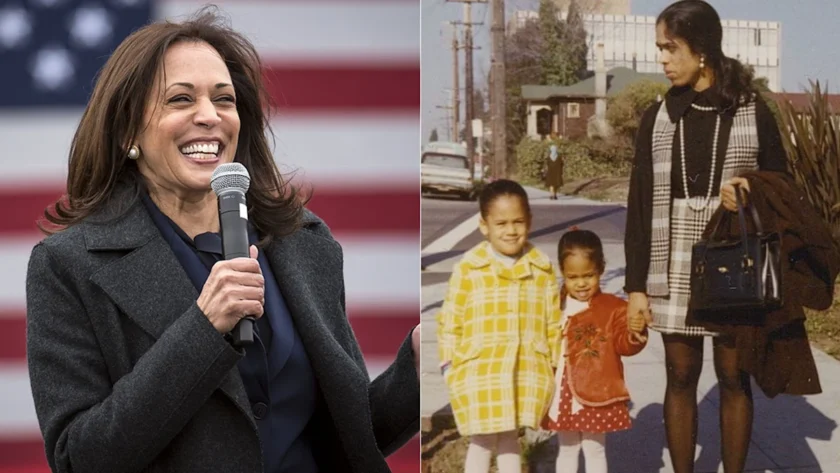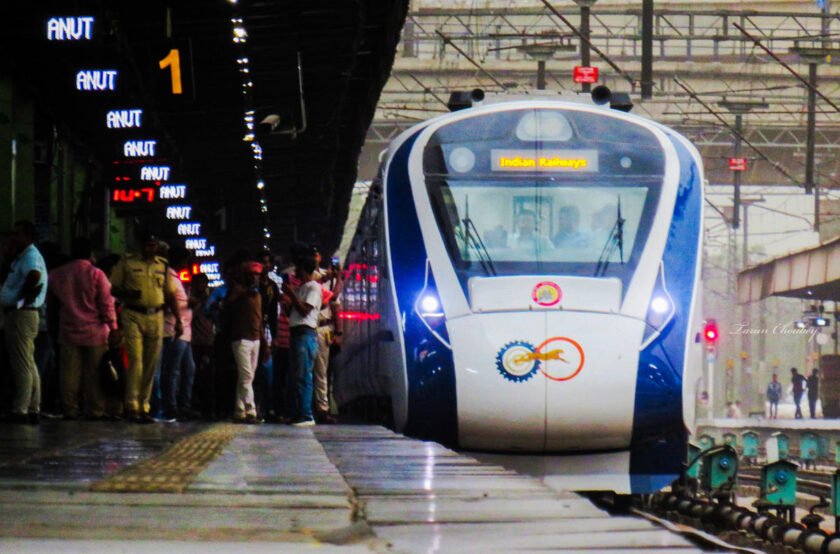Lucknow: The NDA has returned to power at the Centre for a historic third time, Narendra Modi will become the Prime Minister for the third time, but the BJP itself has fallen short of the majority mark of 272. This means that there will again be a coalition government in the real sense. The way the exit polls projected the BJP and the NDA to win with a huge majority, the stock market also boomed, as the possibility of economic reforms being carried forward on a large scale increased. But as soon as the results came in, India was seen to get less than three hundred seats and the BJP much less than a majority, the market crashed, on June 4, the market fell by a historic 8 percent.
So the government can no longer implement reforms with the same speed and strength in the coming times! Along with this, some more effective populist measures will be taken by the government. So can there be a slight slowdown in fiscal stability and capital expenditure!
The Modi government has balanced populist measures so far. But will the coalition government now be forced to do a lot of work towards promoting rural consumption, which has become sluggish! This is expected to impact expenditure on infrastructure. It may also slow down private capex. But there is very little possibility that the government will slow down in carrying out its previous projects.
Modi has just said that in the coming times, reforms need to be implemented in every sphere of life beyond the economic sector. So certainly this time the incoming government will move forward in the direction of reforms with more strength and reforms will be strengthened in those areas which were left behind despite all efforts after 1991. Reforms will grow rapidly, will be more comprehensive and will be faster. But all reforms should be evaluated on the basis of how much its benefits reach the bottom 50 percent of the population.
Strong economic scenario
Due to the Middle East conflict, financial crisis, continuously high inflation rate and declining trade, the International Monetary Fund, World Bank and other global rating agencies are presenting a picture of a decline in the global economic prosperity rate. At the same time, S-P Global Ratings has upgraded India’s economic status from ‘stable’ to ‘positive’. Just on June 1, the Reserve Bank of India brought its 100 tonnes of gold kept in Britain to India, increasing the total amount of gold in India to 408 tonnes.
The tenth year of the Narendra Modi government has been spectacular in the sense that the economic prosperity rate in the financial year 2023-24 was 8.2 percent, far exceeding the estimates of various institutions. This is only the ninth time since 1961-62 that the economic prosperity rate of the Indian economy has been above 8 percent. This is the highest among the major economies of the world. However, the shock to the economy due to the Corona crisis has still not been fully compensated. This shows the strong state of the Indian economy and that is why Prime Minister Modi says that this is just a trailer.
The current economic scenario of India’s economy is full of optimism for the new government. Current macroeconomic conditions in India are indeed healthy and capable of sustaining strong growth momentum. Today, India is well placed to achieve the kind of economic expansion needed to become the world’s third-largest economy by the end of the decade. The economy has grown at 7 per cent or more consistently over the past three years. At the same time, the government has also succeeded in controlling the fiscal deficit. Due to good growth in tax collection, the fiscal deficit in FY 2023-24 is 5.6 per cent of GDP, which is better than expected.
The situation on the inflation front is improving slightly, although the overall inflation rate is still above the Reserve Bank of India’s target. The balance sheet of banks and companies looks strong. India’s foreign exchange reserves are also full, which provides stability on the external front. Policy efforts to enhance macroeconomic stability over several years have been successful. This is also important because only recently India narrowly escaped a balance of payments crisis and the Indian economy was grappling with many pressures.
The Reserve Bank of India is paying an amount of Rs 2.11 lakh crore as dividend to the Government of India, which is much more than expected. 2023-24 has been better for private banks and great for the public sector. The total bad loans (GNPA) of banks have come down sharply, net NPA has also come down. In FY 2024, net non-performing assets (NPAs) of 26 listed banks have been recorded at less than one percent. These banks include 14 private, 7 public sector and 5 small finance banks. This list also includes the country’s top three banks – State Bank of India (0.57 percent), HDFC Bank (0.33 percent) and ICICI Bank (0.45 percent).
All listed banks, including small finance banks, have reported a net profit of Rs 3.20 lakh crore in FY 24, which is 38.5 percent more than a year ago. This is the highest profit of banks so far. SBI was the biggest gainer, reporting a net profit of Rs 61,077 crore. The country’s gross GST collection grew by 10 percent to Rs 1.73 lakh crore in May 2024. It had reached a record level of Rs 2.10 lakh crore in April 2024. This year the monsoon rains in the country will be more than normal, which is expected to increase agricultural production. High
Production will naturally help in controlling food inflation.
Overall, the next government will probably get the best economic starting point ever, but the challenge will be to sustain it so that the country can have rapid and balanced economic growth.
Capital investment will remain the focus
The NDA government is unlikely to reduce its focus on infrastructure development. The BJP manifesto says that the focus will be on farmer welfare, health, improving quality of life, entrepreneurship, clean energy transition and manufacturing and infrastructure development. Over the past decade, infrastructure capital expenditure (capex) funded by the Centre and supported by the states has been the main driver of economic growth. This includes roads, railways, power, telecom, airports and ports, with, of course, a large share being allocated for roads.
In particular, the second term of the Modi government saw a significant increase in capital expenditure, leading to road construction, defence indigenisation, modernisation of railways, strengthening manufacturing through production-linked incentive schemes and optimal utilisation of power grids and power plants. Allocations for roads and highways increased by 500 per cent in the decade up to FY24, with Modi’s second term focusing on Vande Bharat trains and increasing rail network. This has now created an environment for private investment to increase as well.
Another key requirement for sustained growth is a pick-up in the private capital expenditure cycle. With capacity utilisation in the manufacturing sector at 75 per cent (close to the long-term average) and bank and corporate balance sheets in good shape, the ground is set for a recovery in capital expenditure. The private sector is also showing increasing intent to invest. Increasing private investment over the medium term will be crucial for the growth of the economy and should be a key focus of the next government. However, weak private consumption could be a hindrance to private investment, especially when exports or foreign demand is also expected to remain relatively weak. However, this will require policy certainty and confidence in global and domestic economic stability. A rise in consumption demand is also important for private investment to pick up meaningfully. Capacity expansion by the private sector is likely to improve the capital formation to GDP ratio. The government’s PLI programmes are also expected to boost the share of manufacturing in the coming years.
Focus on villages, poor and employment
The Modi government’s management and policies on the macroeconomic front and their implementation have been quite good, but there has not really been much structural change in the Indian economy in the last ten years except for a cyclical revival in capital formation and real estate. Unemployment and inflation have affected the masses and these issues dominated the elections at the grassroots level. A large part of the country’s population is suffering from high and prolonged inflation, irrespective of the cause, and it is lower than the world’s major economies. The new GDP data also clearly shows a slowdown in rural consumption and a decline in agricultural incomes. Taken as a whole, the growth in agricultural sector and rural incomes is very modest. So the challenge is clear; The government should focus on villages, the poor and employment.
PM Modi has been saying earlier and is still saying that India is a young nation, which is a coincidence, and also an opportunity, which has to be fully exploited. But not being able to increase the expected employment, not having more quality and productive employment or not being able to make the youth skilled and trained as per the employment, is missing an opportunity. The most important priority should be to focus on taking advantage of the demographic dividend of the world’s youngest population. For this, there is a need to improve employment opportunities outside the agricultural economy, increase the skills of the youth and increase the overall labor force participation, especially of women. Elections have also indicated that we need more inclusive growth.
Prioritizing spending on education and health is important, because sustaining high growth requires significant investment in the quality of the labor force. In India, general government expenditure on health and education is 1.8 percent and 3.1 percent of GDP respectively, which is less than other economies like China. Improving the quality of labour and participation in the labour force will help increase overall labour productivity, income levels and consumption demand. Within the manufacturing and services sector, medium and small enterprises can help generate employment.
Increasing productivity levels in the agriculture sector is very important as it will help keep food inflation under control and also increase rural consumption. Crop diversification, investment in agriculture sector infrastructure and development of a modern supply chain infrastructure are necessary as it will help farmers get a better price for their produce. Also, improving the employment situation in the unorganised sector will be important.
Proper fiscal management
Proper fiscal management requires the government to increase the tax-GDP ratio in the country. This can be done by streamlining the Goods and Services Tax. Cutting rates in an unprepared manner and making several decisions will help in improving the quality of the economy.
The GST system is still weak due to being a lab. The idea of direct tax reform should also be reconsidered. Tax relief to the middle class is also necessary. The middle class is the one that is hit the most by the government’s reforms. If the government has put the most burden on any class to strengthen the fiscal position, then it is the middle class.
The improvement in the economy after the Covid pandemic has been largely due to high government expenditure. The government should move forward on fiscal consolidation in the budget and present a revised gradual path to bring it to 3 percent of GDP or less. This will increase market confidence and help improve private investment. A major economic policy challenge for the government will be how to improve India’s foreign competitiveness. This will require review and change of policies at many levels, including trade policy. Sustained high growth in exports can help increase investment, create much-needed jobs and improve overall quality growth. In this regard, India can take advantage of geopolitical changes and become a major part of the change like China Plus One.
Private consumption growth
Private consumption in the economy has grown weakly by 3.8 per cent in 2023-24. This is the slowest growth rate in the last two decades (excluding the contraction of the Corona year). Investment has grown well by 9 per cent, with the main contribution coming from the government. The capital expenditure of the central government has increased by 28 per cent in 2023-24, while total state capital expenditure has increased by about 33 per cent in April-February. While there are also signs of investment growth in the private sector. Exports, the third pillar of India’s economy, have slowed down due to weak global growth.
To maintain the growth momentum, the most important aspect will be improvement in private expenditure. While the higher income group is spending, the lower income group remains cautious amid high inflation and low wage growth. Rural demand was also weak last year due to weak monsoon. With the expectation of a normal monsoon this year, we can expect improvement in rural expenditure or consumption demand. Some signs of improvement in rural demand are also visible. In this context, it will be important to see the monsoon situation. A reduction in food inflation will be another condition for a revival in rural consumption. An improvement in the employment scenario will also be important in reviving consumption.
The new government will have a tall task ahead to ensure high economic growth while moving towards fiscal consolidation. The most important challenge that the new government must face is to ensure broad-based private consumption growth by focusing on private investment growth led by capital expenditure. Increasing employment opportunities in urban and rural areas should be a priority. Sustained consumption growth and high capital expenditure by the government will help to kickstart the private capital expenditure cycle. To sustain economic growth, it will be important for the new government to ensure that the benefits of high growth reach the lower income groups.
Reforms need to involve all factors of production – land, labour, capital and technology – as well as reallocate resources from low-productivity sectors to high-productivity sectors. The new government must focus on further strengthening fiscal buffers to enhance macroeconomic stability. It is important to further develop the manufacturing base to meet domestic demand as well as merchandise exports. Government spending on health and education should be increased. Employment opportunities should be created outside the agricultural economy and skills should be enhanced. There is also a need for measures to increase the growth of total resource productivity, facilitate the adoption and diffusion of new global technologies, increase spending on research and development and strengthen innovation.
In the short term, all eyes will be on the July budget for changes in direct or indirect taxation, MSP policy and MNREGA payments. However, in the long term, the main focus of the government will be on infrastructure development, agricultural laws, skill development and job creation in the manufacturing sector. To create jobs, the next government needs to continue to focus on infrastructure development and structural reforms. Improving the efficiency of labor and land markets is necessary. India needs to accelerate its efforts to become a major exporter of manufactured products and connect it to the global value chain. Climate change is also a very important issue. It is also important to formulate policies to reduce carbon intensity, improve urban planning and increase investment in health and education.
-Dr. Umesh Pratap Singh




